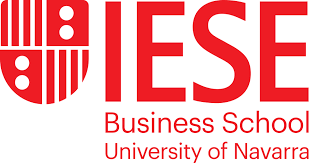Three steps for a leader to take on the road to sustainability
Better Society
Three steps for a leader to take on the road to sustainability
Tuesday, 19th April 2022
Sustainability. It might feel like you’re hearing this word everywhere you turn these days, and if you’re in the early stages of your journey, it can be hard to know where to start.
It’s important to remember though, that sustainability isn’t as simple as just setting some targets to reduce your carbon emissions, it’s part of a much bigger picture, stretching out beyond the internal workings of your organisation. Don’t let that overwhelm you though, as the first steps to making change are quite straightforward.
Identify your mission
Having a mission will shape your entire sustainability strategy and define your objectives. Is your mission going to be something specific, such as ‘reach NetZero by 2030’, or does it suit more to go with something more general, such as ‘do one thing every day’? Only you can decide what fits your overall company culture, but your mission is the best place to start.
Identify your stakeholders
Now you have your mission, it’s important to figure out who is coming on this journey with you. Break your stakeholders down into groups, for example, employees, customers, community. Your stakeholders are the ones who will buy into your mission and be the real catalyst for change. Whilst all stakeholder groups play their part, your employees are key to believing in your mission and working towards it. If your employees buy in to what you are doing, you’ll get the opportunity to see their innovation and their creativity come to the fore even more than usual.
Create your strategy
For us at Encirc, our strategy is Glass Made Good. In order to create the world’s most ethically responsible containers, we must work within our four core pillars: People, Place, Planet and Prosperity. These four P’s guide us in our decision-making process and are all linked by one core element: Sustainability. Our people, our place and our planet must all benefit from our prosperity.
And just like that, you’ve taken your first steps towards becoming a more sustainable business.
It’s easy to assume, once you’ve done all the above, that everyone is moving along with you towards your goals. However, everyone will be at different stages of the journey, and their backgrounds and life experiences will all play a part. Make sure you’re explaining to your people why your focuses are set how they are. Whether you’ve set objectives around biodiversity or gender equality, whatever it may be, your stakeholders may not automatically see the link between them and sustainability. Be clear with your messaging and don’t be afraid to take it back to basics.
The fun really begins when you start to implement change and see results. Last year, we ran a trial designed to create the world’s most sustainable bottle using 100% recycled glass in a furnace run on biofuel. It was a huge undertaking and whilst the trial was successful, the shift we’ve seen amongst our teams since is huge. Our managers are feeding back about ideas their employees are pitching to them. Innovation is at an all-time high.
Whilst there were days during the trial when we wondered if it could really be done, it has acted as a call to action for our staff and they’re truly motivated to make the next big change, or even a series of much smaller ones, to deliver on our sustainability strategy.
On that note, no change is too small. As an industry, we’ve found that creating solutions and efficiencies can stem from simple changes. In the past five years at Encirc, we’ve reduced our carbon output by over 30% of product produced, which in our industry is very significant. That’s by making reductions in energy consumption and altering our fuels and methods of production to be more efficient. 2021 saw us trial three new biodiesel trucks which have the potential to reduce fuel transport emissions by 90%.
Switching office lights to run on a timer or removing single use plastic from your sites, might seem like small changes, but combined, the results add up. Other changes, such as becoming paperless, might seem daunting or near impossible, but if your employees are bought into that mission, they will be ready for it. Make the change, you might just be surprised how easily it’s accepted.
I’ve found that sharing developments is key to continuous improvement. Whatever comms platform you use, utilise it well. Frequent updates, videos, celebratory posts about what people are doing across the business, or in the wider community, will keep your stakeholders invested and spur them on. On any given day our Workplace app might feature a departmental ‘bright spot’ update, a post from a proud parent whose children are pledging to go plastic-free at school, or a video guide on how to make small impactful changes at home.
Imagine what we can achieve when we all come together across our industries to create more environmentally friendly practices! Our focus right now is on promoting collaboration and improvement throughout our sector, whilst continuing to seek out and create efficiencies and changes in line with our strategy.
Sustainability doesn’t just make sense ethically; it makes complete business sense and will help you grow while futureproofing your organisation. It’s not a cost, it’s an investment, and now is the time to innovate.
If anyone has questions, please feel free to email me at [email protected]

